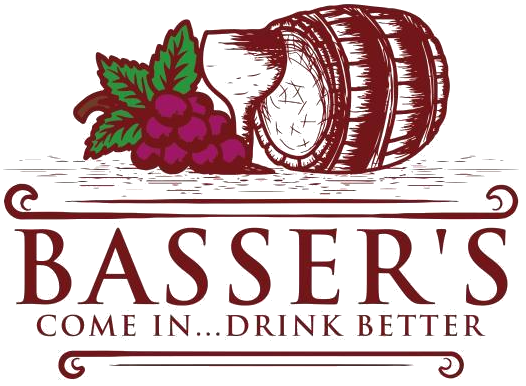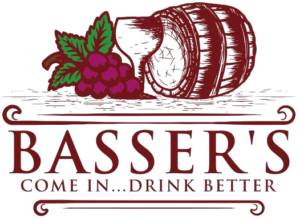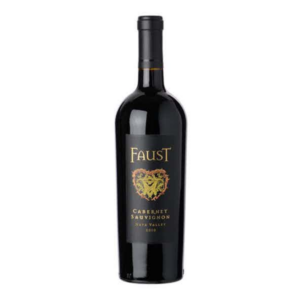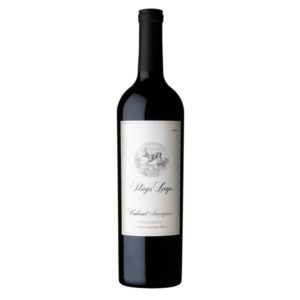2021 BV Tapestry Cabernet
Winemaker Notes
2021 produced some of the best fruit in recent years. Early rain, then almost no notable precipitation for the rest of the season, provided an ideal environment. The summer saw early and even ripening. Low yields created small berries with intense flavor. Harvest began early at the end of August. With optimal ripening, our winemakers could take their time bringing in the grapes. The wine has fantastic character with aromatic intensity and tremendous balance and structure that are equally lush and fruity. A tremendous year to experience the nuances and terroir distinction from around the valley.
Blend: 60% Cabernet Sauvignon, 15% Petit Verdot, 11% Cabernet Franc, 9% Malbec, 5% Merlot
James Suckling 96 Points
Jeb Dunnuck 93 Points
About Beaulieu Vineyard
One of the Founding Wineries in Napa Valley, Georges de Latour and his wife, along with “the Maestro,” André Tchelistcheff, established a legacy of quality wine that transcends the generations.
The winemaking legacy at Beaulieu Vineyard remains unbroken for more than a century. Our story as one of the longest continually operating winery in the Napa Valley is written by the remarkable place and the extraordinary people who shaped winemaking in America.
We respect classic values and the art of craftsmanship and believe that these aspects of our heritage cannot be left behind.
In 1900, when Georges de Latour’s wife, Fernande, first laid eyes on the land that would become our original Rutherford vineyard, she said “Quelle beau lieu!” or “What a beautiful place.” Shortly thereafter, de Latour sold his thriving cream of tartar business, bought the four-acre ranch, and founded Beaulieu Vineyard with the vision of making Napa Valley wines that would rival those of his native France.
Georges and his wife expanded their land holdings over the next several decades, many of which are still part of the BV portfolio today. In 1903 they purchased 127 acres in Rutherford, which they named “BV Ranch No. 1.” In 1910 another land purchase was made, known as “BV Ranch No. 2.”
The Origin of Legendary Napa Valley Wines
De Latour began importing pest-resistant vines and offered European vitis vinifera varieties that were grown, grafted, and shipped from Europe to his fellow wine industry colleagues in California. He established his own nursery in Paris to produce these grafted vines.
Beaulieu Vineyard Thrives During Prohibition
Years before Prohibition began, de Latour had the foresight to obtain a warrant to produce alter wine for the Church and was thus positioned to become the first nationwide supplier of alter wine to Catholic churches across America. He established offices in New York as the Beaulieu Vineyard Distributing Company — expressly for the altar wine trade. During the stormy debate leading up to the vote on the 18th amendment, advertisements for Beaulieu Vineyard altar wines appear in print for the first time.
Prohibition forced most of the Napa Valley wine industry to shut down. As they shuttered, de Latour began purchasing tanks and barrels, which brought the winery’s production capacity up to 65,000 gallons. During this time, he also began purchasing equipment, including a press and crusher, in order to outfit the renovated stable at Beaulieu for additional wine production. But de Latour wanted to grow more.
In 1923, Georges de Latour purchases the Fred Ewer Winery, a building that dates back to 1885. Its four original stone walls remain the core of today’s Beaulieu Vineyard winery in Rutherford. This purchase increases Beaulieu’s production dramatically. Altogether, de Latour’s actions allowed Beaulieu Vineyard’s business to thrive and increase fourfold in the 1920s, while other producers had to close their doors.
In 1938, post-Prohibition, de Latour traveled to France and met André Tchelistcheff. De Latour hired Tchelistcheff, a Russian-born enologist with European winemaking expertise and a spirit of innovation, as winemaker.
After 35 years at Beaulieu Vineyard, Tchelistcheff retired in 1973 and the role of winemaker passed to Joel Aiken, then to Jeffrey Stambor. After almost 20 years of retirement, André Tchelistcheff rejoined Beaulieu Vineyard as a wine consultant and worked with the winemaking team to continue to bring innovation to the winery until his passing in 1994. The Napa Valley wine community mourns the Maestro’s passing, remembering all of his amazing accomplishments and contributions from his five decades in the industry. He instituted the philosophy of continuous innovation in vineyard and winery to which Beaulieu Vineyard remains dedicated today. Be sure to visit the statue of André Tchelistcheff as you enter the Reserve Tasting Room.
Some of History’s Most Notable Figures Enjoyed Beaulieu Wines
Throughout the 1940s and 1950s, Beaulieu Vineyard wines were the wines of state, being served at dinners and receptions honoring some of the great people of the age.
-
The White House poured Beaulieu Vineyard wines at dinners given for Generals Dwight D. Eisenhower and Douglas MacArthur in New York
-
General Charles de Gaulle drank Beaulieu Beaurosé at a Waldorf Astoria luncheon
-
The French Foreign Minister in San Francisco poured Beaulieu Chablis at a dinner honoring British diplomat Sir Anthony Eden
-
Winston S. Churchill was served Georges de Latour Private Reserve at a banquet in his honor at the Waldorf Astoria
-
President Truman served Beaulieu Vineyard Burgundy and Rhine wine to Queen Juliana of the Netherlands at the Carlton Hotel, Washington, D.C.
-
New York mayor La Guardia presented Queen Juliana with the particularly elegant 1942 vintage of Georges de Latour Private Reserve at a luncheon in her honor
-
On March 24, 1959, Queen Elizabeth and Prince Phillip were served Georges de Latour Private Reserve at a Pan American Union dinner hosted by U.S. Secretary of State John Foster Dulles
Related products
Winemaker Notes
2021 produced some of the best fruit in recent years. Early rain, then almost no notable precipitation for the rest of the season, provided an ideal environment. The summer saw early and even ripening. Low yields created small berries with intense flavor. Harvest began early at the end of August. With optimal ripening, our winemakers could take their time bringing in the grapes. The wine has fantastic character with aromatic intensity and tremendous balance and structure that are equally lush and fruity. A tremendous year to experience the nuances and terroir distinction from around the valley.
Blend: 60% Cabernet Sauvignon, 15% Petit Verdot, 11% Cabernet Franc, 9% Malbec, 5% Merlot
James Suckling 96 Points
Jeb Dunnuck 93 Points
About Beaulieu Vineyard
One of the Founding Wineries in Napa Valley, Georges de Latour and his wife, along with “the Maestro,” André Tchelistcheff, established a legacy of quality wine that transcends the generations.
The winemaking legacy at Beaulieu Vineyard remains unbroken for more than a century. Our story as one of the longest continually operating winery in the Napa Valley is written by the remarkable place and the extraordinary people who shaped winemaking in America.
We respect classic values and the art of craftsmanship and believe that these aspects of our heritage cannot be left behind.
In 1900, when Georges de Latour’s wife, Fernande, first laid eyes on the land that would become our original Rutherford vineyard, she said “Quelle beau lieu!” or “What a beautiful place.” Shortly thereafter, de Latour sold his thriving cream of tartar business, bought the four-acre ranch, and founded Beaulieu Vineyard with the vision of making Napa Valley wines that would rival those of his native France.
Georges and his wife expanded their land holdings over the next several decades, many of which are still part of the BV portfolio today. In 1903 they purchased 127 acres in Rutherford, which they named “BV Ranch No. 1.” In 1910 another land purchase was made, known as “BV Ranch No. 2.”
The Origin of Legendary Napa Valley Wines
De Latour began importing pest-resistant vines and offered European vitis vinifera varieties that were grown, grafted, and shipped from Europe to his fellow wine industry colleagues in California. He established his own nursery in Paris to produce these grafted vines.
Beaulieu Vineyard Thrives During Prohibition
Years before Prohibition began, de Latour had the foresight to obtain a warrant to produce alter wine for the Church and was thus positioned to become the first nationwide supplier of alter wine to Catholic churches across America. He established offices in New York as the Beaulieu Vineyard Distributing Company — expressly for the altar wine trade. During the stormy debate leading up to the vote on the 18th amendment, advertisements for Beaulieu Vineyard altar wines appear in print for the first time.
Prohibition forced most of the Napa Valley wine industry to shut down. As they shuttered, de Latour began purchasing tanks and barrels, which brought the winery’s production capacity up to 65,000 gallons. During this time, he also began purchasing equipment, including a press and crusher, in order to outfit the renovated stable at Beaulieu for additional wine production. But de Latour wanted to grow more.
In 1923, Georges de Latour purchases the Fred Ewer Winery, a building that dates back to 1885. Its four original stone walls remain the core of today’s Beaulieu Vineyard winery in Rutherford. This purchase increases Beaulieu’s production dramatically. Altogether, de Latour’s actions allowed Beaulieu Vineyard’s business to thrive and increase fourfold in the 1920s, while other producers had to close their doors.
In 1938, post-Prohibition, de Latour traveled to France and met André Tchelistcheff. De Latour hired Tchelistcheff, a Russian-born enologist with European winemaking expertise and a spirit of innovation, as winemaker.
After 35 years at Beaulieu Vineyard, Tchelistcheff retired in 1973 and the role of winemaker passed to Joel Aiken, then to Jeffrey Stambor. After almost 20 years of retirement, André Tchelistcheff rejoined Beaulieu Vineyard as a wine consultant and worked with the winemaking team to continue to bring innovation to the winery until his passing in 1994. The Napa Valley wine community mourns the Maestro’s passing, remembering all of his amazing accomplishments and contributions from his five decades in the industry. He instituted the philosophy of continuous innovation in vineyard and winery to which Beaulieu Vineyard remains dedicated today. Be sure to visit the statue of André Tchelistcheff as you enter the Reserve Tasting Room.
Some of History’s Most Notable Figures Enjoyed Beaulieu Wines
Throughout the 1940s and 1950s, Beaulieu Vineyard wines were the wines of state, being served at dinners and receptions honoring some of the great people of the age.
-
The White House poured Beaulieu Vineyard wines at dinners given for Generals Dwight D. Eisenhower and Douglas MacArthur in New York
-
General Charles de Gaulle drank Beaulieu Beaurosé at a Waldorf Astoria luncheon
-
The French Foreign Minister in San Francisco poured Beaulieu Chablis at a dinner honoring British diplomat Sir Anthony Eden
-
Winston S. Churchill was served Georges de Latour Private Reserve at a banquet in his honor at the Waldorf Astoria
-
President Truman served Beaulieu Vineyard Burgundy and Rhine wine to Queen Juliana of the Netherlands at the Carlton Hotel, Washington, D.C.
-
New York mayor La Guardia presented Queen Juliana with the particularly elegant 1942 vintage of Georges de Latour Private Reserve at a luncheon in her honor
-
On March 24, 1959, Queen Elizabeth and Prince Phillip were served Georges de Latour Private Reserve at a Pan American Union dinner hosted by U.S. Secretary of State John Foster Dulles




